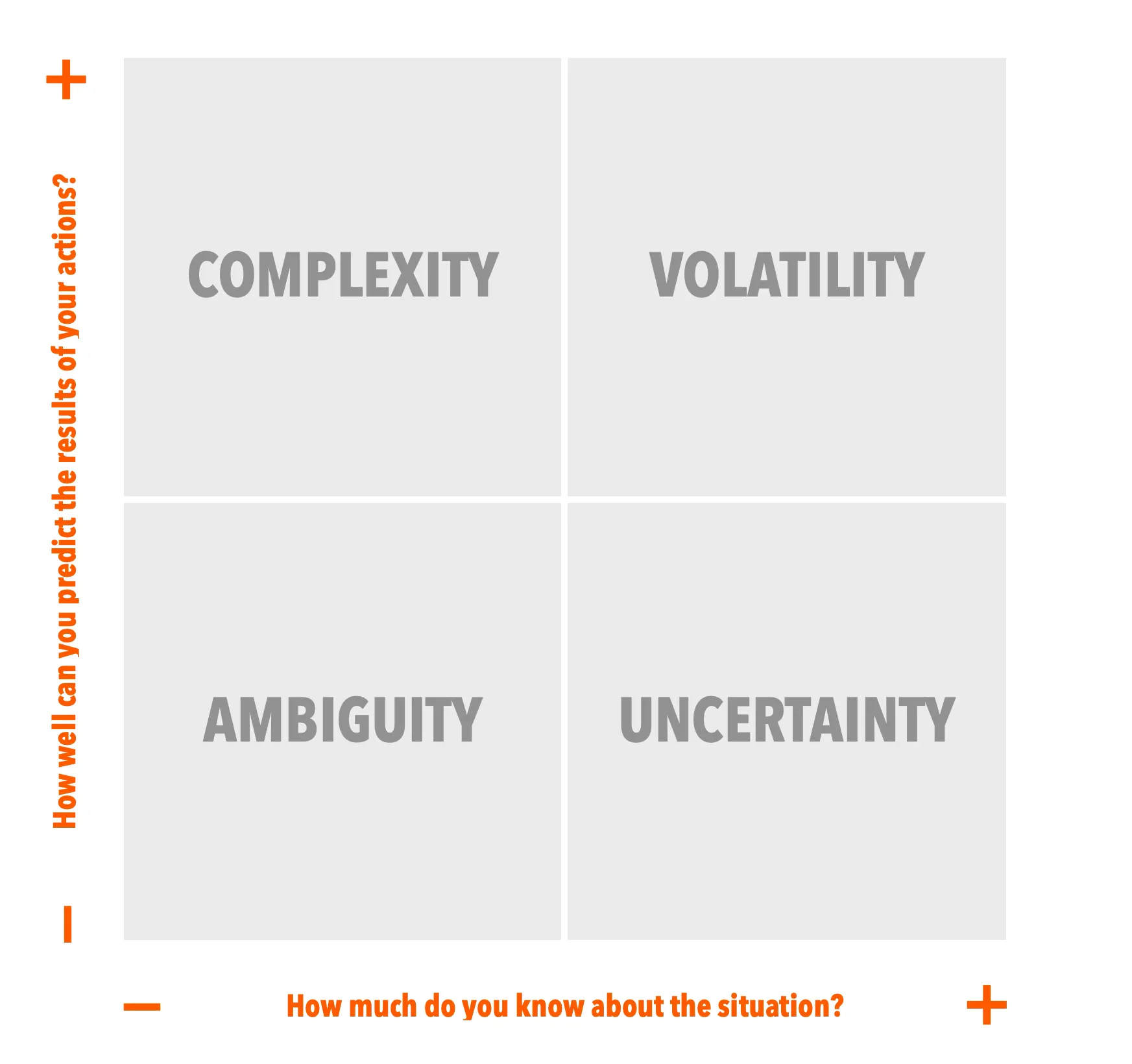VUCA Revisited: Acting Skillfully in Uncertain Times
April 10, 2025

Now that we’re again living through uncertainty, I wanted to share what I said at the time. Turns out, I never wrote about the framework itself. Let’s correct that.When contexts shift, it’s harder to act skillfully. The end of the Cold War was such a time. The tense order that emerged after World War II had ended; military leaders had to make decisions in unfamiliar territory.
In response, the U.S. Army War College produced VUCA, a framework for describing unsettling contexts. It’s an acronym of their four main characteristics:
Source: VUCA Revisited: Acting Skillfully in Uncertain Times | Jorge Arango
There’s little doubt we live in volatile times–and not just in terms of the impact of new, dramatically higher tariffs on world trade. Technological changes give rise to uncertainty, and their impacts can take much longer to play out than we imagine. Often attributed to Bill Gates, the futurist Roy Amara observed in the 1960s “Most people overestimate what they can do in a year and underestimate what they can do in ten years”. And I would suggest that the changes LLMs will bring to many fields fit this model.
Here Jorge Arango considers how to respond to times of uncertainty, using a model from the US military. Have a “compelling picture of where you’re heading beyond the current turmoil” very much resonated with me.







